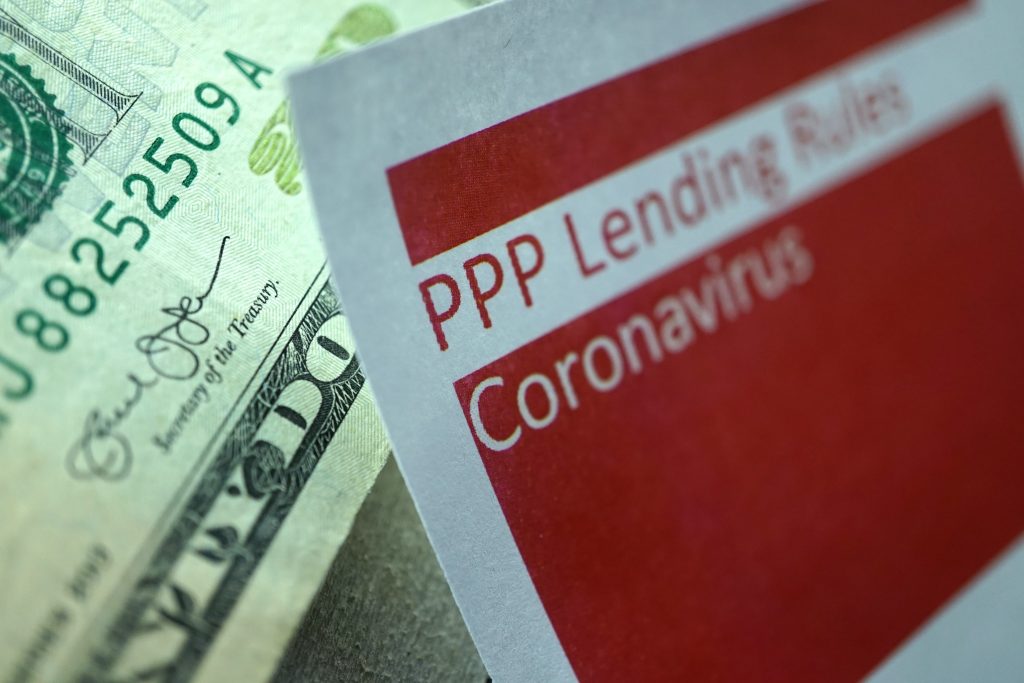
Paycheck Protection Program (PPP) Flexibility Act 2020 – What Does it Mean for You?
Business owners can breathe a sigh of relief now that President Trump has officially signed into law the Paycheck Protection Program Flexibility Act (PPPFA).
But what does that mean for you and your business?
Here we’ll take you through the key changes that the PPP Flexibility Act has introduced and why it’s important for you to be aware of them.
The Paycheck Protection Program
First and foremost, a bit about the Paycheck Protection Program (PPP) – the PPP is a government initiative that was introduced under the CARES Act on March 27, 2020. It’s designed to help small businesses in the United States cover their payroll costs and retain employees, as well as meet other business expenses.
The first round of the PPP began accepting applications on April 3 but quickly ran out of funds – by April 16, the Paycheck Protection Program was officially depleted! In response to the remaining demand that small businesses were making for government assistance, the PPP received a second round of funding and opened the second round of applications on April 27.
By May 1, in a matter of just 4 days, the second round of PPP funds had distributed more than half of the $310 billion, showing just how necessary it was to keep the program running. Fast forward 4 weeks to early June and the PPP 2.0 still has roughly $100 billion left to distribute to small businesses in need. Naturally, you may be wondering why there was such a sudden slowdown in PPP loan distribution?
Keep reading to find out.
Why have small businesses stopped taking PPP loans?
It should come as no surprise to hear that the Paycheck Protection Program was (and is) not designed perfectly. The PPP has received its fair share of criticisms, ranging from an unclear application process to unfair distribution of funds to big corporations and so on. But when PPP 2.0 launched it fixed many of those problems – so why the slowdown?
One word: Forgiveness.
Loan forgiveness is the most attractive part of the PPP for many small business owners. But the original criteria to get approved for PPP loan forgiveness were placing limits on struggling small businesses from using the funds as they truly needed to. So, instead of risking placing themselves under more of a financial burden by taking out a PPP loan and possibly not qualifying for forgiveness, small business owners have started deciding not to take PPP loans.
Even those businesses that have already gotten approved and received PPP funds are choosing to abstain from using the money for fear of not qualifying for forgiveness later on down the line. Some have even returned the money. But those aren’t solutions to PPP problems, those are symptoms. The cure? Changes to the rules.
Enter the PPP Flexibility Act.

What are the changes caused by the PPP Flexibility Act?
The PPP Flexibility Act has made a number of positive changes to the Paycheck Protection Program – here are the most notable amendments that small business owners should be aware of:
1. The 75/25 rule is now 60/40
What does that mean though? The original PPP rules stipulated that, in order to qualify for loan forgiveness, the borrower must use at least 75% of the loan on payroll and a maximum of 25% on other ‘allowed’ expenses. The PPPFA has changed those percentages to 60% and 40% respectively. Meaning, you now have more leeway to spend money on the expenses you want!
2. Forgiveness period extended to 24 weeks
To qualify for loan forgiveness under the original PPP rules, the borrower was required to use the funds for the intended purposes within a period of 8 weeks (and prove it). The new PPP rules under the Flexibility Act have extended that ‘forgiveness period’ to 24 weeks (6 months) or December 31, 2020 – whichever comes first.
3. Loan maturity extended to 5 years
At the outset of the Paycheck Protection Program, the rule was that any funds which didn’t qualify for forgiveness would need to be repaid within a period of two years. That loan term has now been extended to five years under the PPPFA, giving you three more years to pay back the funds!
4. Forgiveness application period set to 10 months
Under the initial set of rules outlined by the PPP, borrowers were not required to apply for loan forgiveness within a specific timeframe. This new amendment requires borrowers to apply for forgiveness within 10 months from the day that their ‘forgiveness period’ ends, otherwise they will not be eligible.
5. No penalty for businesses that were unable to rehire employees
Prior to the passing of the Paycheck Protection Program Flexibility Act, businesses that wanted to qualify for loan forgiveness were required to maintain the same number of employees and same level of payroll as they had before February 15, 2020. Any changes made between February 15 and April 26, 2020 to the number of full-time employee equivalents or their salaries had to be restored by June 30, 2020. The rule has been adjusted so that as long as the business can prove it tried to rehire but was unable to do so, it can still be eligible for loan forgiveness.
Note: While these changes automatically go into effect for all businesses, those that have already received a PPP loan and have begun using the funds may elect to operate by the 8 week ‘forgiveness period’ rule. Be sure to talk to your lender about how the changes under the PPPFA may impact your loan status.
How will the PPP Flexibility Act help small businesses
For those business owners that have been reluctant to apply for a PPP loan, these new rules passed by the PPP Flexibility Act should definitely be taken into consideration.
The PPP Flexibility Act has made a number of positive changes to the Paycheck Protection Program. Borrowers can use funds more freely, feel less pressure, have more time to pay back, and more! Click To Tweet
Changes in the PPP Flexibility Act have made it so PPP loan borrowers can:
- Use more of the funds to pay for expenses other than payroll – something that will be greatly beneficial to those applying for a PPP loan as a self-employed individual, since they very often don’t have any employees.
- Feel less pressure to rush and use PPP funds in a short amount of time just for the sake of ensuring their ability to qualify for forgiveness.
- Have more time to pay back loan amounts that don’t qualify for forgiveness, which helps avoid getting into a position where the debt will become too big of a burden in an already-shaky economy.
- Remain eligible for loan forgiveness even if difficult economic circumstances have kept the business from being able to rehire employees.
All of that said, the rule that borrowers must apply for PPP loan forgiveness within 10 months of the end of their ‘forgiveness period’ does place a new restriction that did not exist prior to the PPPFA’s passing. Some may see this as a new obstacle, but others interpret this rule as an added layer of clarity and structure to the program.
One bit of confusion that’s worth clarifying is what some refer to as the ‘forgiveness cliff’ – when a borrower uses less than 60% on payroll and, as a result, automatically becomes ineligible for loan forgiveness. But, according to reports, that understanding was unintended.
The potential confusion in the PPPFA’s phrasing over the 60% threshold was addressed in a joint statement issued by the Treasury Department and the SBA:
“If a borrower uses less than 60 percent of the loan amount for payroll costs during the forgiveness covered period, the borrower will continue to be eligible for partial loan forgiveness, subject to at least 60 percent of the loan forgiveness amount having been used for payroll costs.”

We encourage all business owners to do their due diligence before applying for any business loans – PPP or otherwise. Here are a few extra resources that can help answer any questions you may still have about the Paycheck Protection Program:
Reasons you may be rejected for a PPP loan
How to apply for PPP loan
Applying for a Paycheck Protection Program loan is an easy process, so long as you know what to expect and you come prepared.
Check that you’re eligible
First, check that you meet the eligibility criteria for a PPP loan:
- You meet the SBA’s definition of a ‘small business’, nonprofit, veterans organization, Tribal business concern, sole proprietorship, or if you’re a self-employed individual or independent contractor
- You can show proof that your business has been harmed by the coronavirus outbreak
- Your business has no more than 500 employees
- Your business was active on or before February 15, 2020
Get prepared
Next, make sure you have the documents required for PPP loan applications:
- Completed PPP application
- Driver’s license/government identification
- Documentation verifying the number of full-time equivalent employees on payroll, dollar amounts of payroll costs, and that payroll taxes were paid
- 2019 payroll statement
- 2019 P&L statement
- For self-employed individuals: IRS 1040 Schedule C for 2019
- For all other businesses: 2019 business tax return + IRS Form 941 (per each quarter of 2019) or IRS Form 944 (annual for 2019)
You will also be required to provide signed certification that:
- The funds will be used for business related expenses as outlined in the loan application;
- You’ll only take one PPP loan;
- You will provide your lender with documentation verifying how the funds were used.
Apply wisely
Lastly, choose the lender that you want to apply through. With hundreds of banks and lenders that you could potentially go to for a PPP loan, this last step could get complicated. Avoid wasting your time and apply for a PPP loan through Become. You’ll get the power of technology which will automatically match your with the lender that best fits your business’s needs.
Wrapping up
The Paycheck Protection Program Flexibility Act has made significant changes to this government relief initiative, creating an easier set of rules that will ultimately give business owners the flexibility they need to survive this coronavirus crisis.
Due to the unprecedented nature of the COVID-19 outbreak and the impact it has had on the economy, there’s no telling if more changes will be made to the PPP in the coming months. Be sure to stay up-to-date with coronavirus business-related news and updates so you can keep your business poised for a strong comeback.

 Please wait...
Please wait...




